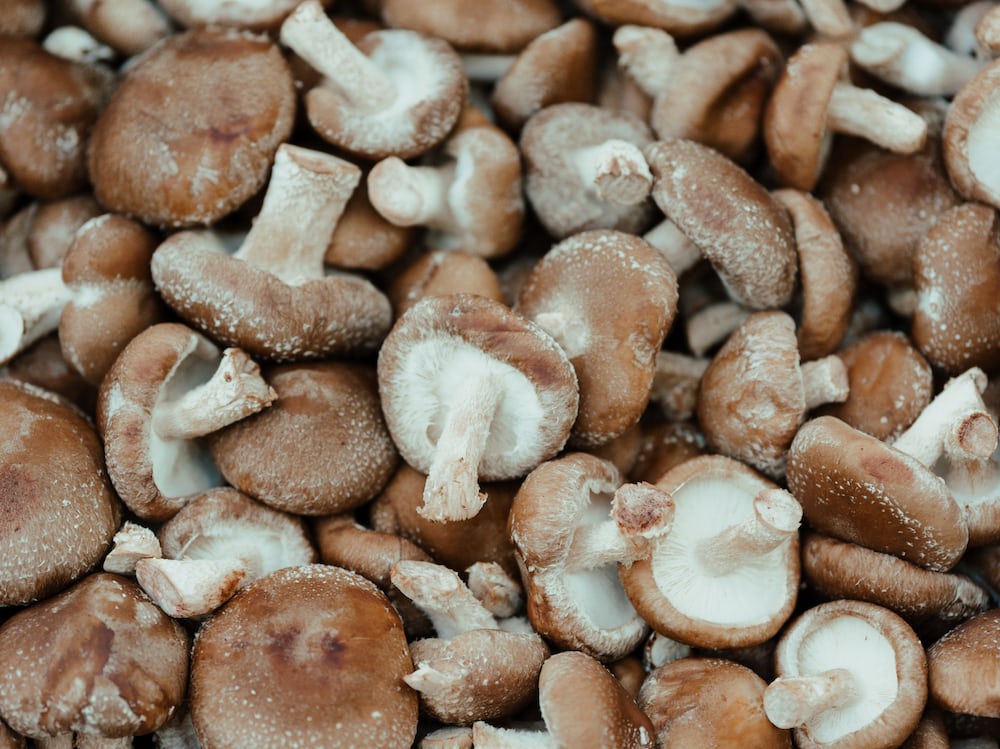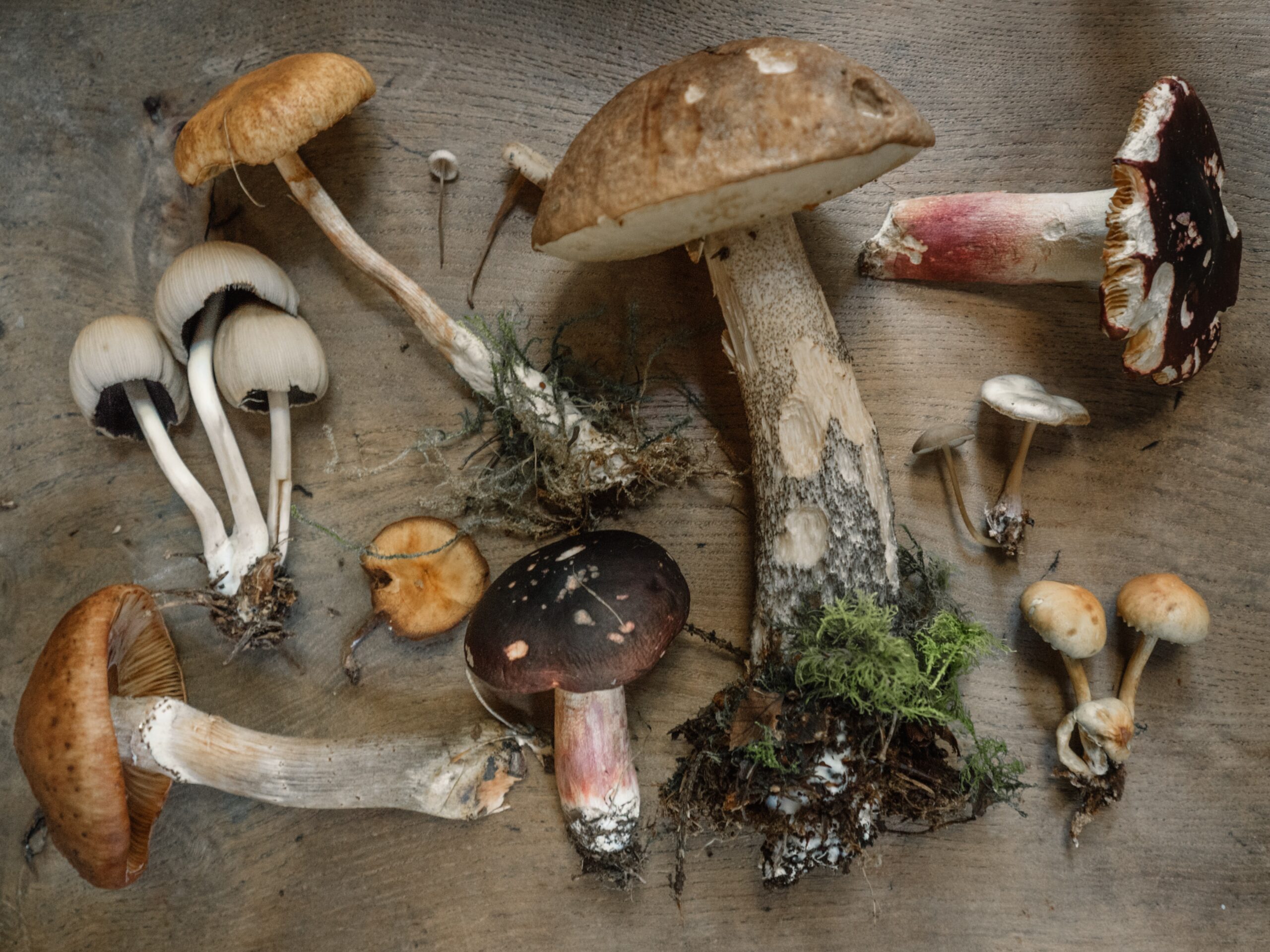Shiitake mushrooms (Lentinula edodes) are a type of edible fungus native to East Asia, particularly Japan and China.

Here are some key details about shiitake mushrooms:
- Appearance: This mushrooms have a distinct appearance with broad, umbrella-shaped caps that are brown and slightly convex. The caps are often between 2 to 4 inches in diameter. The underside of the cap has gills.
- Flavor and Aroma: Shiitake mushrooms are known for their rich, meaty, and savory flavor. They have a strong umami taste, which is why they are highly valued in cooking.
- Nutritional Value: This mushrooms are a good source of various nutrients, including vitamins (such as B vitamins), minerals (like selenium and copper), dietary fiber, and antioxidants. They are low in calories and fat.
- Health Benefits: Shiitake mushrooms are believed to have several potential health benefits. They may boost the immune system, have anticancer properties, and help lower cholesterol levels. Additionally, they are a source of compounds like lentinan, which is being studied for its potential in cancer treatment.
- Culinary Use:This mushrooms are a versatile ingredient in cooking. They can be sautéed, stir-fried, grilled, or used in soups, stews, and various dishes. Dried shiitake mushrooms are commonly used to enhance flavor in broths and sauces.
- Drying and Rehydration: Dried shiitake mushrooms are popular in Asian cuisine. To use them, you need to rehydrate them by soaking in hot water. The soaking liquid can also be used as a flavorful broth.
- Cultivation: This mushrooms are grown on logs or specialized substrate in controlled environments. They are available fresh, dried, and in various forms, such as shiitake mushroom powder and supplements.
- Medicinal Uses: Shiitake mushrooms have a long history of use in traditional medicine, particularly in China and Japan. They are believed to have immune-boosting and health-promoting properties.
- Allergies and Side Effects: Some individuals may be allergic to shiitake mushrooms, and consuming them raw can cause digestive issues. Cooking shiitake mushrooms is recommended to avoid potential adverse reactions.
- Availability: Shiitake mushrooms are widely available in many grocery stores, both fresh and dried. They have gained popularity in international cuisine and are used in a variety of dishes.
Remember to properly clean and cook shiitake mushrooms before consuming them to enhance their flavor and make them safe to eat. They can be a delightful addition to many recipes, providing a unique and delicious umami flavor.
Growing shiitake mushrooms can be a rewarding and relatively straightforward process. Here are the basic steps to grow shiitake mushrooms at home:
- Acquire Shiitake Spawn or Mycelium: Shiitake mushrooms grow from mycelium, which is the vegetative part of the fungus. You can purchase shiitake spawn or mycelium from a reputable supplier. They are usually available in the form of dowel plugs or grain spawn.
- Select Suitable Logs or Substrate: Shiitake mushrooms are often grown on hardwood logs, such as oak, maple, or beech. Logs should be relatively fresh, ideally cut from living trees in the dormant season. You can also use sawdust or straw as an alternative substrate.
- Prepare Logs or Substrate: If using logs, they should be cut to the desired length (usually 3 to 4 feet) and debarked. Drill holes into the logs and insert the shiitake spawn or mycelium dowel plugs. Seal the holes with wax to prevent contamination.
- Incubation: The inoculated logs or substrate need to be incubated in a cool, dark, and humid environment for several months. This allows the mycelium to colonize the wood or substrate. Temperature and humidity conditions during incubation are critical for successful colonization.
- Fruiting Conditions: Once the logs or substrate are fully colonized, transfer them to a location with appropriate fruiting conditions. Shiitake mushrooms typically fruit when exposed to light, fresh air, and temperature fluctuations. The ideal temperature range for fruiting is around 50-75°F (10-24°C).
- Maintain Moisture: Shiitake mushrooms require consistent moisture. You can maintain humidity by misting the logs or substrate with water, or by placing a humidifier in the growing area. Keeping the humidity level around 90% is usually sufficient.
- Harvesting: Shiitake mushrooms will begin to appear as small, pin-like structures, and they will grow into mature mushrooms. Harvest them when the caps are still convex and just before they fully open. Use a knife to cut the mushrooms from the logs or substrate.
- Repeat Cycles: Shiitake logs can produce mushrooms for several years, with multiple flushes of mushrooms. After each harvest, soak the logs in cold water for about 24 hours to stimulate new growth.
- Prevent Contamination: Be vigilant for contamination by other molds or fungi, and remove any contaminated logs or substrate to prevent the spread of diseases.
- Storage: Store harvested shiitake mushrooms in a cool, dark place in a paper bag or porous container. They can also be dried for long-term storage.
Growing shiitake mushrooms may require some trial and error to get the environmental conditions just right, but with patience and practice, you can enjoy a steady supply of fresh, homegrown shiitakes. It’s essential to research and follow specific instructions for the type of shiitake spawn or mycelium you are using, as different varieties may have slightly different requirements.
Read More : Nutrition in Mushroom


